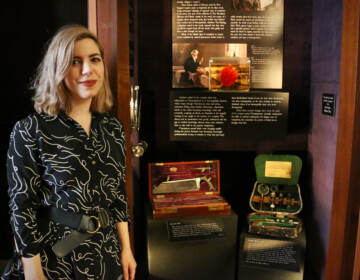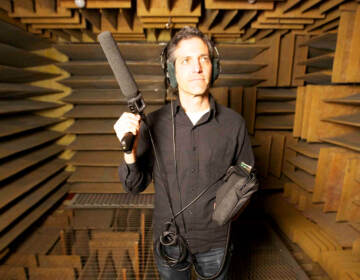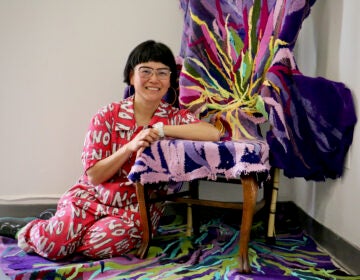Plastic artwork will be decomposed by mealworms at Philly’s Asian Arts Initiative
Narendra Haynes’ Styrofoam sculptures will be decomposed by mealworms during an exhibition at the Asian Arts Initiative.
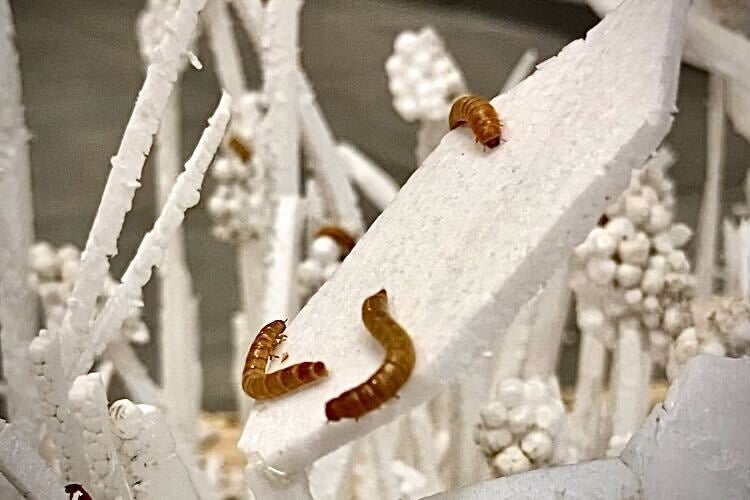
A Styrofoam meadow created by artist Narendra Haynes is consumed by mealworms. The living sculpture is part of the "Eco/Systems: Gather" exhibit at Asian Arts Initiative. (Emma Lee/WHYY)
A small artificial meadow has been carved out of discarded plastic coolers that once polluted the Delaware River. The sculptural piece “Field of Preflection,” measuring about 8 feet by 4 feet, is starting its life at the Asian Arts Initiative’s gallery space at 12th and Vine.
It will be a short life. The sculptural piece will not survive the show.
Over the course of the five-month exhibition “Eco/Systems: Gather,” “Field of Preflection” will be devoured by mealworms, slowly reducing it to a pile of dirt.
Artist Narendra Haynes is a painter and sculptor who makes work based on environmental ecology. In his studio, he maintains a mealworm population. He says he has bred tens of thousands of them, which act as partners in his creative process.
“It’s a collaboration,” said Haynes.
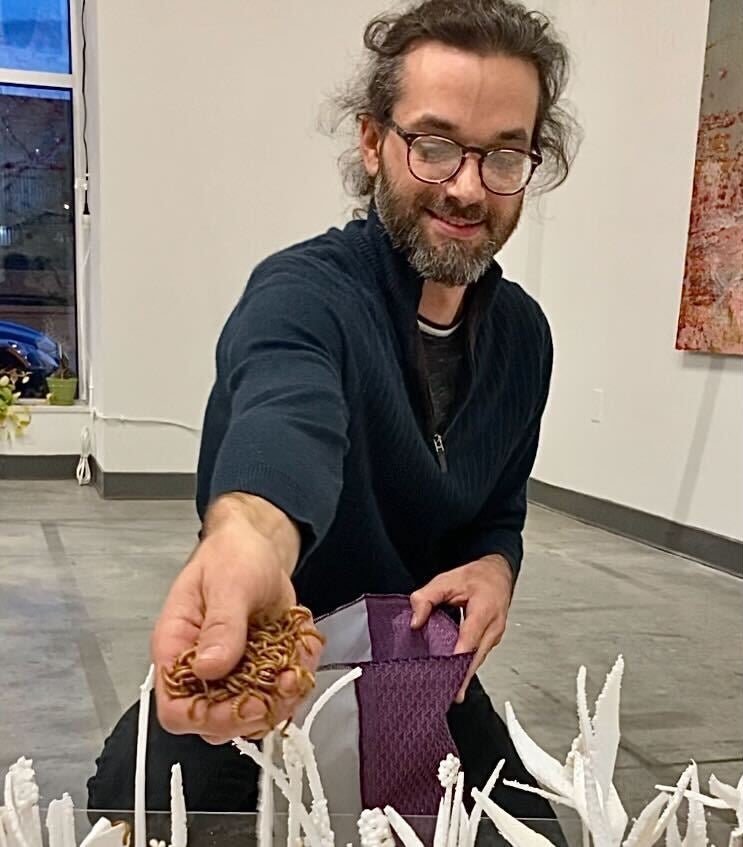
Mealworms are not technically worms. They are larvae of the mealworm beetle, about half an inch long, similar to the maggots of flies. Mealworms have the ability to eat and digest plastic, quickly decomposing polystyrene that would otherwise last millenia in the environment.
The result resembles dirt, but Haynes is not exactly sure what it is. He is hoping to work with his alma mater, the University of Pennsylvania, to perform a chemical analysis of his mealworm dirt.
“The research that I based this on claimed that it’s an organic material, which makes sense because to change from a synthetic to an organic material is a matter of breaking down long carbon chains,” he said. “I am looking forward to confirming that it’s dirt or something analogous to it, but in the meantime I just trust my five senses. It does have a pretty earthy smell to it.”
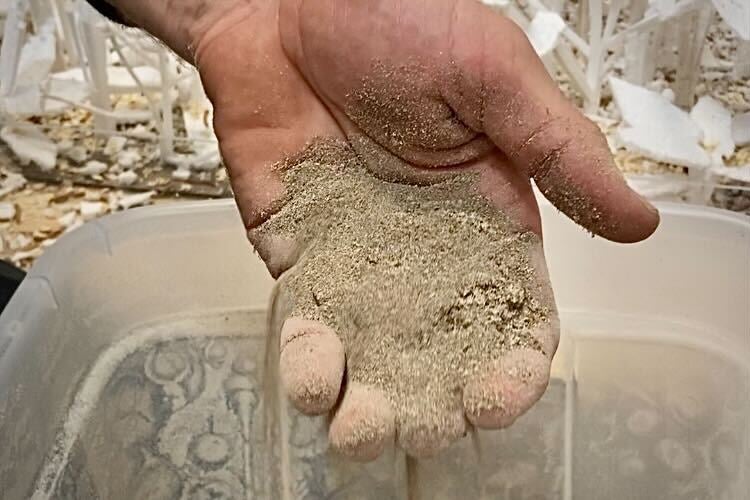
Previously, Haynes had been a participant at RAIR, an artist residency at the Revolution Recovery recycling dump in Northeast Philadelphia. Revolution is adjacent to a toxic superfund site, a large acreage on the Delaware River that has historically been an industrial site which seeped heavy metals into the ground for a century.
Now, the meadow is not used for any purpose, other than as an occasional art site through the artist residency. It was there that Haynes gathered plastic for his mealworms, an expanded polystyrene commonly known as Styrofoam.
For “Field of Preflection” (an invented word suggesting a prequel to an ecologically remediated Field of Reflection), Haynes carefully recreated the toxic meadow, carving formed insulation into life-size flowers, stems, and blades of grass. The artificial meadow is on a low platform built with plexiglass sides.
Then, the day before “Eco/Systems: Gather” opened on October 13, he released 10,000 mealworms into “Preflection” and a similar sculpture “To Become Prosperous,” made with plastic coolers sourced from a fish shop in Chinatown.
The plexiglass sides prevent the mealworms from escaping. In a few weeks they will begin turning into adult beetles. Like a sand mandala made to exist only temporarily, Haynes’ carved meadow will be reduced to something resembling earth.
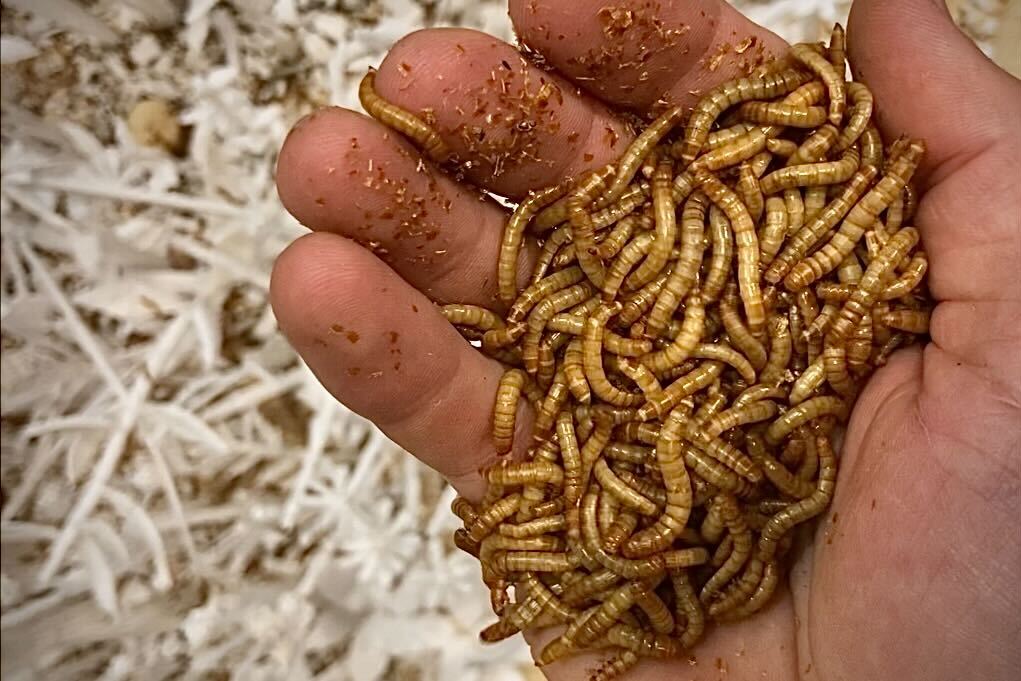
Haynes also added some sliced potatoes and a generous layer of rolled oats, for nutrition. Although mealworms will eat polystyrene, to them it is literally junk food.
“They can’t survive on it,” he said. “There’s no nutritional value.”
Haynes is also exhibiting paintings made with mealworms. He uses his canvases, while still wet with thin layers of acrylic paint, to take impressions of mealworm trails after they have consumed plastic.
The result is a highly textured painting that acts as an abstract map.
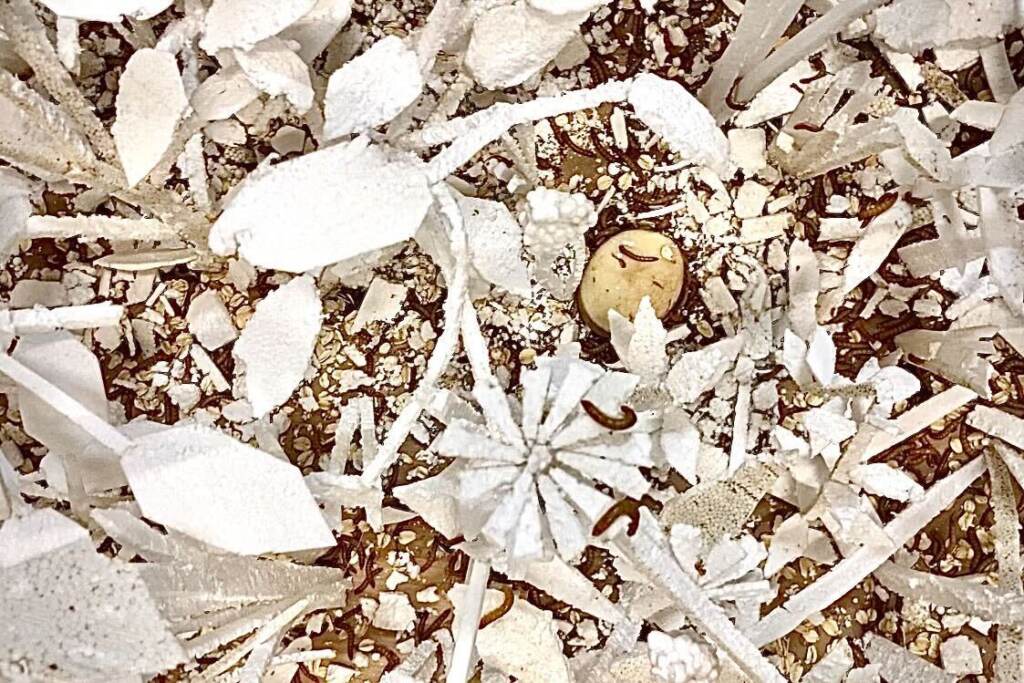
“It’s recording of an existing phenomena, documenting it,” Haynes said. “That all adds to this idea of landscape, which is really what the paintings are about for me.”
The exhibition “Gather” is the second and final phase of the Asian Arts Initiative’s “Eco/Systems” project, inviting artists to show work informed by environmental concerns.
The mealworms share the space with “Overflow” by Eurhi Jones, who strung colorful plastic household objects — plates, cups, bottles, utensils — as garland throughout the gallery space, offering visitors a chance to add to it while considering the volume of single-use plastic items in their lives.
The exhibition also includes a tree stump and partial root system that had been pulled out of the waste stream at Revolution Recovery while artist Bassem Yousri was in residence there. He suspended the trunk by chains from an a-frame structure, turning a natural artifact found in garbage into an object d’art.
“Eco/Systems: Gather” will be on view at the Asian Arts Initiative until February 28.

Get daily updates from WHYY News!
WHYY is your source for fact-based, in-depth journalism and information. As a nonprofit organization, we rely on financial support from readers like you. Please give today.



